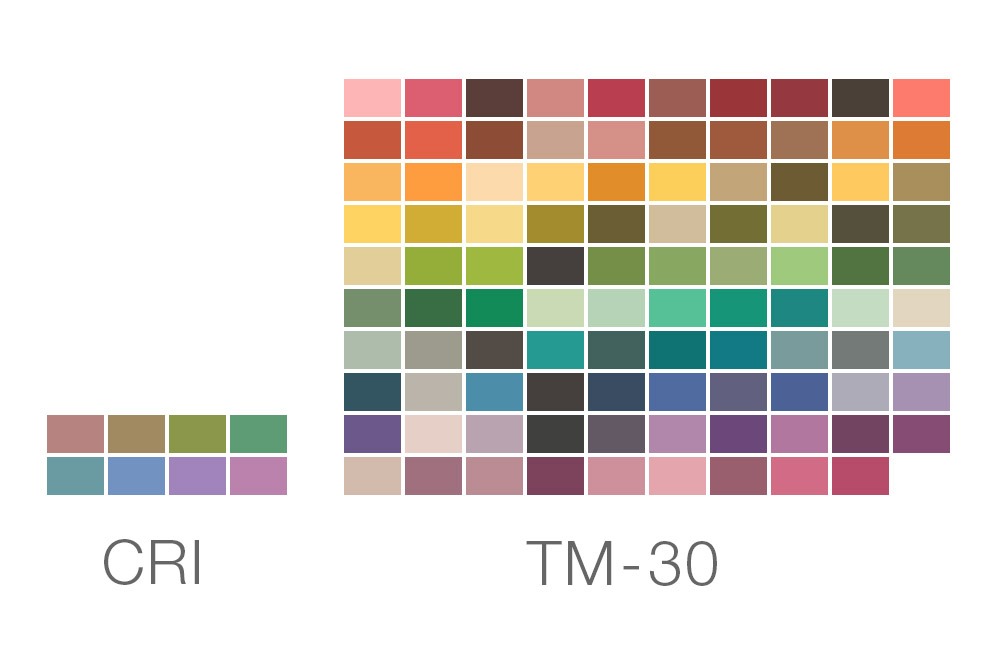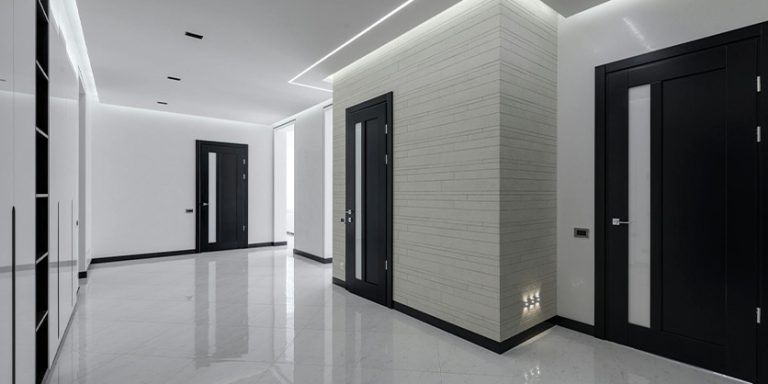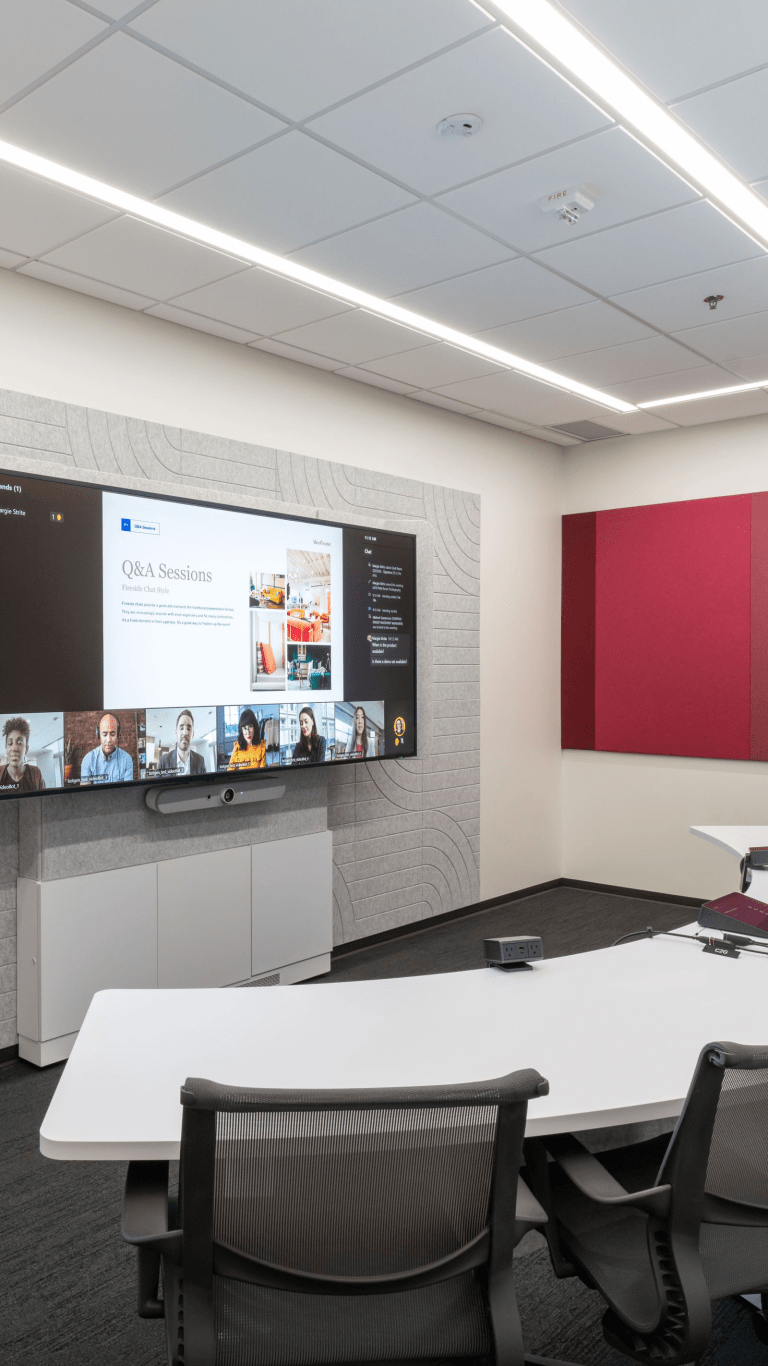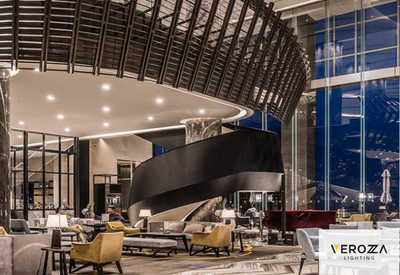Why You Need to Know About TM-30

There’s no doubt that LEDs have disrupted the lighting industry in many ways, but the latest impact is the growing demand to adopt TM-30 as a metric for color rendering over the industry standard of CRI.
At the recent American Lighting Association (ALA) Conference in Palm Beach, Jason Livingston, LC – principal of Studio T+L and author of the textbook Designing with Light: The Art, Science, and Practice of Architectural Lighting Design and a co-chair on the IES Color Committee – held an educational session that detailed why TM-30 is a better metric for assessing color than the familiar CRI.
“This might be a little controversial, but I believe that color rendering is more important than color temperature,” Livingston stated. “I know that one of the first things many of us think about when we think about color rendering is CCT, but we need to understand that our visual system adapts [to our environment]. When you first walk into a room, you ‘see’ that it is of a given color temperature – which will make some sort of an impression on you, whether positively or negatively – but within just a few minutes, your visual system has normalized that CCT to just plain white, and it stops having the kind of impact that it did initially.”
As a result, considering that the light source being used in an application – incandescent, fluorescent, and now LED – will affect how people “see” the color of the object or surface being illuminated, Livingston pointed out that CRI is an outdated method.
Some background: Incandescent lighting was the standard for decades, and that technology remained relatively unchanged. “This was not a problem until the 1940s, when fluorescents became very popular,” Livingston noted, adding, “It was around 1953 that fluorescent lamps were producing more lumens than incandescent lamps. So that created a very dramatic shift between the incandescent lamps we had known for the past 50 or 60 years and this new technology, which was fluorescent.”
The color shift that occurred under fluorescent reduced the vibrancy of objects. According to Livingston, it wasn’t until 1965, that the CIE (International Commission on Illumination) introduced CIE-13, which was its method for measuring color rendering.
“I want you to consider that we’re talking about a technology – CRI – that’s from 1965, and was last updated in 1995. In computer terms, it’s like a Windows DOS machine that is now running Windows XP,” he joked, adding, “There have been efforts to improve CRI, but none of them have succeeded.”
There have also been advances in the mathematical models of human vision since 1965, he explained, but these new models have not been incorporated into the CRI calculation because such a decision needs a unanimous vote from members of the CIE, which it has been unable to achieve.
Livingstone noted that, over time and with the advancement of the highly diverse spectra of LEDs, discrepancies became apparent in the color appearance of objects compared to its CRI value. “This became a big topic of concern at the IES as it became clear that LEDs were going to become a dominant light source and that the color rendering metric we had was not up to the task of giving us specific information,” he said.
The IES’ Color Committee began developing a new system for measuring color rendering. The result – ANSI/IES TM-30-24 – is a national standard that published by the Illuminating Engineering Society in 2015, updated in 2018, and will have a new update shortly.
Livingston performed a much deeper dive into the capabilities of TM-30 versus the limitations of CRI. (For example, CRI measures only 8 color samples, while TM-30 uses 99 color samples in its calculations.)

Overall, the intent of Livingston’s session was to make residential lighting professionals aware of the advantages of the TM-30 metric and how it can lead to a better color rendering result on their projects because it incorporates color preference, vividness, and fidelity into its calculations.
One hurdle in the wide adoption of TM-30 is having manufacturers jump on board with providing TM-30 metrics just like they have with CRI. “Many manufacturers are probably going to give you the information that comes from the LED manufacturer,” he added. Livingston said there are at least four manufacturers that have a spectroradiometer with a TM-30 calculator. Since color rendering is not a standard where compliance is mandatory like it is with safety issues, change will happen slowly. And unlike safety concerns, TM-30 testing would be done at the manufacturer level and not by an independent lab. For example, DMF is one manufacturer that has embraced TM-30.
Livingston explained how implementing TM-30 would yield a more pleasing result for clients. In the case of lighting a restaurant, “you want to determine your design intents. Let’s say I talk to the restaurateur and we agree that we want the light to enhance the appeal of the food as well as be flattering to the skin tones of the guests.” That client preference can be achieved by using the TM-30 metric in a way that cannot be accommodated with the CRI model.
“If I’m lighting a corporate space and learn from the client that they have a specific corporate color that repeats throughout the office – let’s say that brand color is blue – then I will want all colors to look the way we expect them to look, but I’m going to make sure the blue looks really good.” That fine-tuning of color rendering is possible using TM-30.
While widespread adoption of TM-30 is not going to happen immediately, it is on the horizon. Manufacturers need to be aware that this metric is going to be increasingly requested by lighting designers and should explore how to accommodate them. Providing the most up-to-date specification information to lighting designers, whether they are employed by a showroom or in their own practice, will ensure a manufacturer’s brand becomes preferred by lighting professionals. Offering TM-30 specs will also serve as a differentiator between manufacturers who offer more precise color rendering and those who do not.
Helpful articles
https://www.energy.gov/eere/ssl/tm-30-frequently-asked-questions








